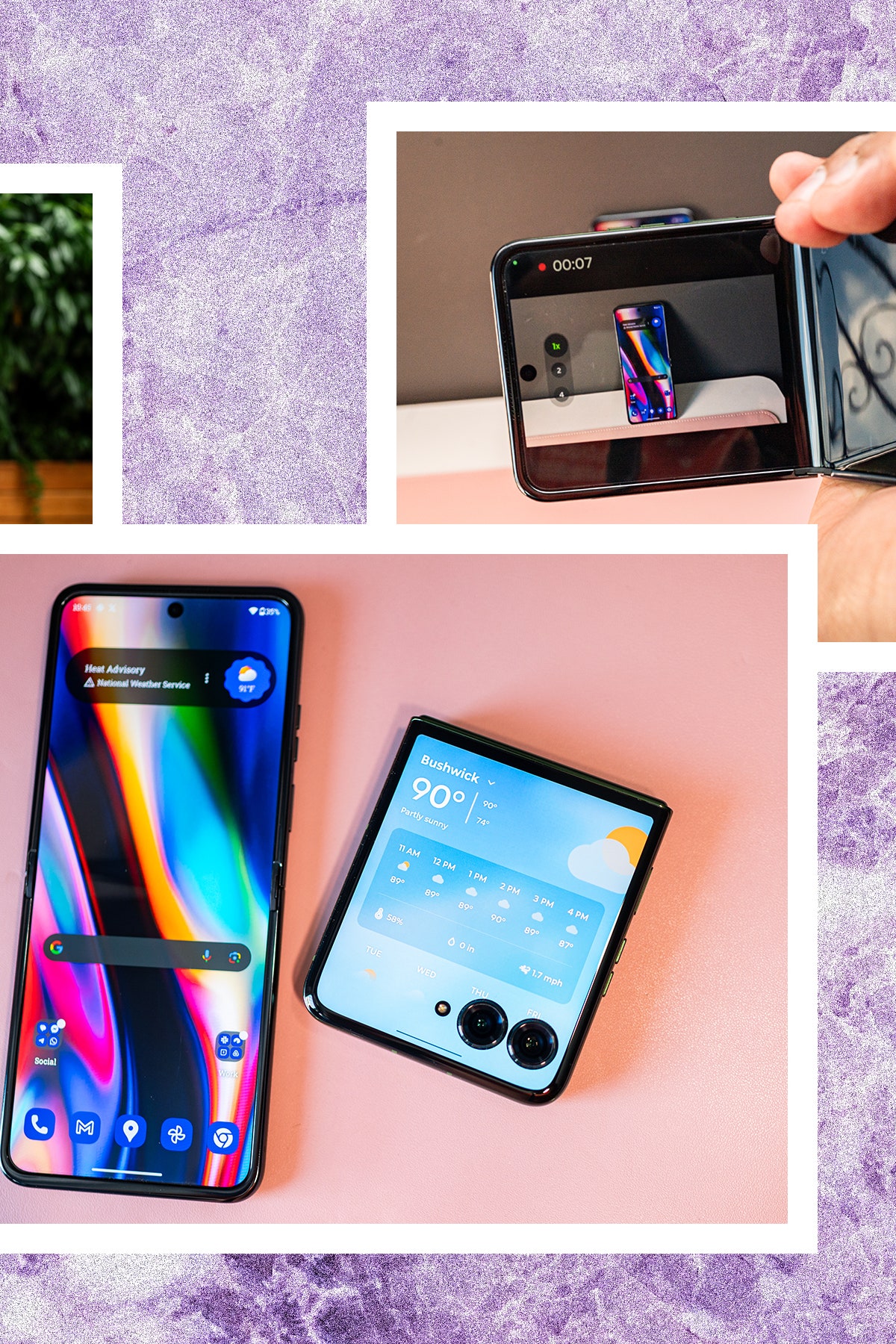Razr (2024)Razr+ (2024)3.6-inch external screen4-inch external screen6.9-inch 120-Hz pOLED display6.9-inch 165-Hz pOLED display50-MP main, 13-MP ultrawide, 32-MP selfie camera50-MP main, 50-MP 2X telephoto, 32-MP selfie camera4,200-mAh battery4,000-mAh batteryMediaTek Dimensity 7300XQualcomm Snapdragon 8s Gen 3IPX8 water resistanceIPX8 water resistance
Arguably the most impactful difference is the performance. The Razr+ has Qualcomm’s Snapdragon 8s Gen 3 chipset, which is a slightly lesser version of the Snapdragon 8 Gen 3 inside flagship Android phones like the Samsung Galaxy S24. However, it operates just as smoothly, with fast app launches, snappy multitasking, and a level of fluidity that doesn’t make you think about the performance.
I can’t say the same for the cheaper Razr, which has MediaTek’s Dimensity 7300X chip inside. Performance is generally fine, but I faced more sluggish behavior here and there, and switching between certain apps, like Google Maps and YouTube Music while navigating, was especially stuttery and slow. It just doesn’t feel as optimized. My benchmark scores put the Razr at a little less than half the power of its pricier sibling.
There are some other, minor differences here and there, like how there’s no Wi-Fi 7 support on the Razr, but it’s present on the Razr+. They share an internal 6.9-inch pOLED display size, but they have different refresh rates, though these screens are mostly the same to my eyes in all but brightness, where the Razr+ edges out its partner slightly. Both were still completely readable on sunny bright days. I’ll note that both handsets tend to get noticeably warm after extended use, but not uncomfortably so. I also might have to attribute this to the heat wave we’ve been having here in New York City.
Motorola Razr (left) and Motorola Razr+ (right)
Photograph: Julian Chokkattu
One other thing—be wary if you want to make use of wireless charging on these devices. Wireless charging pads should be fine, but they did not work well with any of the stands I have. That’s because the charging coil is situated on the lower half of the phone, and wireless charging stands often have these coils higher up.










